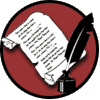%%USERNAME%% %%ACCWORDS%% %%ONOFF%% |
 | No ratings.
A Religion based on Roller Skating. |
| In the year 2047, amidst a world craving connection and kinetic joy, a new religion emerged in the sun-bleached sprawl of New Tucson: the Holy Rollers. Founded by former roller derby champion Mira "Blaze" Vasquez, the faith revered roller skating as the ultimate expression of divine flow—a sacred act that united body, soul, and the eternal rhythm of the universe. Mira’s revelation came during a midnight skate through the desert, wheels humming against cracked asphalt under a canopy of stars. She claimed the Cosmic Axle, a celestial force, spoke to her: “Roll, and you shall know freedom. Roll, and you shall know me.” From that moment, she preached that skating was not mere sport but a path to transcendence, each spin and glide a prayer in motion. The Holy Rollers’ central temple, the Cathedral of the Eternal Glide, was a marvel—a sprawling, neon-lit roller rink built on the edge of the city. Its circular sanctuary, a polished maple floor, gleamed under a domed ceiling painted with constellations that glowed faintly, mimicking the night sky of Mira’s vision. Encircling the rink was a banked roller derby track, where the choir—known as the Seraphim Skaters—performed their hymns. These weren’t staid songs but pulsing, rhythmic chants, blending gospel, techno, and desert folk, delivered as the choir skated in perfect synchronicity, their voices rising with each lap. Worship services, called “Glides,” were vibrant spectacles. Congregants laced up their skates—each pair blessed with sage smoke and a sprinkle of axle grease—and rolled onto the rink in flowing robes dyed in sunset hues. The High Axler, Mira herself, led the sermon from the center, spinning gracefully as she spoke of the Cosmic Axle’s teachings: balance, momentum, and the courage to fall and rise again. Around her, the Seraphim Skaters wove through the derby track, their songs like a heartbeat, urging worshippers to skate faster, to feel the divine pulse. The Holy Rollers’ scriptures, etched into recycled skate wheels and displayed in the cathedral’s Wheel Vault, emphasized three tenets: Flow (harmony with the universe’s rhythm), Friction (embracing life’s challenges as opportunities to grow), and Spin (the eternal cycle of renewal). New members underwent the Rite of the First Roll, a solo skate across the rink while reciting the Chant of Momentum: “I roll, I rise, I am.” The faith wasn’t without controversy. Traditionalists decried the Rollers as hedonists, mocking their “church on wheels.” Rival faiths claimed the rink’s pulsing music and flashing lights were more nightclub than sacred space. Yet the Rollers persisted, their numbers swelling as people flocked to the cathedral, drawn by the promise of community and the visceral thrill of worship. The annual Great Derby of the Axle, a sacred roller derby tournament, became a global pilgrimage, with teams competing not for victory but for the honor of embodying the divine flow. By 2060, the Holy Rollers had rinks in every major city, each with its own derby-choir track. Mira, now in her seventies, still skated at the New Tucson cathedral, her silver hair trailing like a comet’s tail. The faith had evolved—some sects emphasized meditative slow rolls, others embraced high-speed rituals—but the core remained: to skate was to commune with the infinite. One evening, as the Seraphim Skaters sang and the congregation rolled beneath the glowing stars, a young worshipper paused at the rink’s edge, wheels still humming. “This,” she whispered, “is what it means to be alive.” And with a push, she glided back into the flow, another soul bound to the Cosmic Axle, rolling toward eternity. |